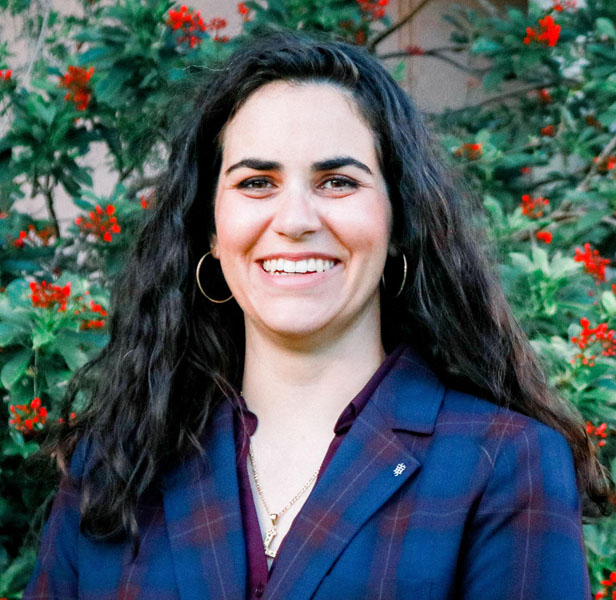October 05, 2023
Q&A: Getting to Carbon Neutral
Victoria Sierra of Koozie Group explains some of the steps the Top 40 supplier took to get carbon neutrality certification and shares insights to help other industry companies on the same journey.
Last month, Top 40 supplier Koozie Group (asi/40480) and its sister company IMAGEN Brands (asi/93990) announced that it had received CarbonNeutral certification. In this Q&A, Victoria Sierra, compliance manager for Koozie Group, explains why this milestone is so important, how the supplier is reducing emissions and what other promo companies can do to follow in their (shrinking) carbon footprint.

Victoria Sierra, compliance manager at Koozie Group
Q: Why was pursuing carbon neutrality an important part of Koozie Group’s strategy?
A: This is a critical time in the promotional products industry as we address the issues facing our planet. Sustainability is important not only to our distributors and their end-users, but also to our employees and their families. We want to lead the promotional products industry in these efforts by going beyond just selling sustainable products to taking this next step in our corporate responsibility journey.
One of our core values – we call them People Powers – is “One Team,” because each member of the company contributes to our overall success. We think the same can be said about the planet: We’re all on the same team inhabiting Earth, and we want to contribute to this team’s success. Simply put, we think the best way for us to keep the good going is to do good.
Q: Can you share some details about steps you’ve taken to reduce carbon emissions in daily operations?
A: We’ve tried to reduce our carbon footprint as a whole in a few different ways. Here are a few examples:
• To reduce single-use plastics within our facilities, we eliminated Styrofoam cups and plastic stir sticks, and we provide new employees with reusable drinkware during onboarding.
• We also reuse broken or scrapped parts of pens that we manufacture in-house by melting the parts down and re-manufacturing them into a new pen.
• We stopped using plastic packaging for acrylic drinkware, eliminating the need for up to 1.9 million plastic bags annually.
• We’re in the middle of a rolling change to #4 LDPE plastic when the use of plastic is unavailable.
Q: Carbon offsetting can be a little controversial (there was that Guardian report at the beginning of the year about “phantom credits,” for example). How do you choose reputable projects and ensure your company isn’t engaging in greenwashing?
A: We went the certification route because we wanted a third party to validate our findings, but we specifically went with Climate Impact Partners because they were able to verify the authenticity of carbon credits and assist with selecting projects that align with our values. Because we are new to carbon offsetting, we wanted a partner that has experience in both the carbon market and with businesses operating in a variety of different areas. Our partner ensures we are buying legitimate credits while helping us avoid greenwashing when discussing our efforts.
Q: Among the carbon offsets Koozie Group is supporting is an Amazon rainforest conservation project in Brazil. Can you elaborate on how the project works and why you selected it?
A: Because of our large calendar and Souvenir Sticky Note business, we really wanted to support a project related to paper. The Amazon REDD+ project in Brazil focuses on Reducing Emissions from Deforestation and (forest) Degradation. Without other options, communities will raze rainforests to convert the area to farmland to try to earn a living. Not only does this result in losing some of the most biodiverse ecosystems in the world, but the resulting agriculture may not even be enough to sustain the community. This project helps preserve rainforests by working with local communities to provide better income, education and sustainable forestry training.
“It’s well established that consumers are looking beyond a company’s product or service offerings and are beginning to look at a company’s environmental and social efforts. As more companies want to do better for our environment, they’ll start looking toward offsets and carbon neutrality.” Victoria Sierra
Q: You’ve said the next step in your journey is measuring Scope 3 emissions. Can you talk a little more about how those are different than Scope 1 and 2, and how you can measure and reduce those indirect emissions?
A: Scope 1 and Scope 2 emissions are relatively easy to track because they are under our direct control, or we have a simple way to document them. Internally, we refer to Scope 1 as the “burn” emissions because they most commonly result from burning fuel in our fleet vehicles. With gas station receipts or looking at mileage of a car, it’s relatively easy to track our emissions from this source. We refer to Scope 2 as the “buy” emissions because they are the emissions that result from our energy purchases. Similar to the burn emissions, we can document these thanks to the monthly usage on our electric bills.
Scope 3 is the ethereal “beyond” emissions category because we don’t produce them, and they’re not directly controlled by us, even though we are responsible for them. This includes things like employee commuting, business travel and shipping. This scope is harder to track because there are many different factors that go into it (the distance or method of travel, package size, etc.) and the category is so broad – it’s essentially a catch-all of things that don’t fit into the other two categories but still cause emissions.
In total, we are working on nine Scope 3 categories and are already carbon neutral on seven of those. To reach our goal, we plan to measure and reduce these emissions even further through a variety of activities. For example, we were able to approximate our business travel emissions by determining the amount spent on total company travel, approximating how many trips were done between all our sites, then applying the average carbon footprint to each trip. In our efforts to minimize emissions where we can, we have continued work-from-home and hybrid policies and offer local pickup for orders.
Q: Do you anticipate carbon neutral certification to become more widespread in the promo industry?
A: We certainly hope so, because we think it’s just the starting point for all industries, not just promo. It’s well established that consumers are looking beyond a company’s product or service offerings and are beginning to look at its environmental and social efforts. As more companies want to do better for our environment, they’ll start looking toward offsets and carbon neutrality. We think the next step is reducing emissions with science-based targets and eventually becoming net-zero. Carbon neutrality and net-zero are often used interchangeably, but net-zero means that you have gotten rid of all emissions, rather than just offsetting any emissions you’ve made.
Q. What are some tips for other promo companies looking to shrink their carbon footprint?
A: It’s hard to shrink your carbon footprint without knowing the size of it, so the best place to start is by tracking your greenhouse gas emissions. Scope 2 is probably the easiest jumping-off point since everyone gets a bill from their local electric company, so all the information is in one place. Scope 1 might take a bit more legwork to get started, but once it’s rolling, it’ll be relatively easy to collect the information. With this information, companies can make informed decisions on measures they can take to internally reduce their footprint – and work with reputable consultants to offset any unavoidable emissions.

Promo for the Planet is your destination for the latest news, biggest trends and best ideas to help build a more sustainable and socially-responsible industry.
